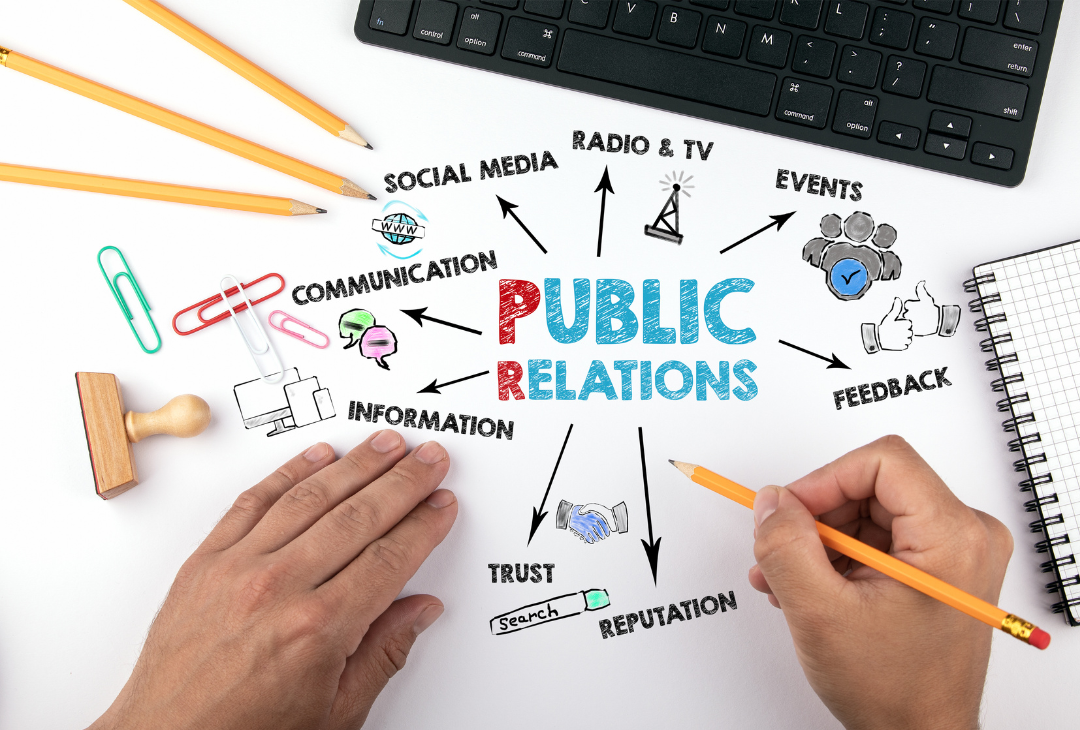Proper branding combined with effective public relations (PR) can supercharge a business’ sales and customer loyalty. However, many entrepreneurs don’t spend enough time investing in brand development. This is especially true for small and medium-size businesses which are often short on staff and resources and may think branding is unnecessary. However, effective branding can benefit any business, no matter its size or budget. Branding is what sets your business apart from the competition.
The Importance of Branding
People often conflate brand and logo, but they are not the same. Logos are images that communicate the meaning behind a brand. A brand is a marketing strategy designed to get customers to associate a business and its products or services with a particular emotion, value or experience. It’s what a customer thinks and feels when they see a product and why they choose that one instead of its competitor.
When a customer comes into contact with a brand, they receive information that elicits certain thoughts and emotions, even if they don’t realize it. Over time, these subtle messages become more real in the customer’s mind than the product or service itself.
Successful branding campaigns create and nurture emotional connections between a business and its customers. This connection generates customer loyalty.
When consumers buy into a brand, they often do so because it has met or exceeded their expectations. If the brand accomplishes this consistently, it will become synonymous in the mind of the consumer with that delivered value. The brand thereby becomes the very thing the customer wants to accomplish, feel or create.
Brand Development
Branding is a lot more than a logo. The Nike brand isn’t the “swoosh” and the McDonald’s brand isn’t the “golden arches”. The brand is what those images represent to customers. Consider how you feel when you encounter those brands and what you expect those companies’ products to deliver. What do you want customers to associate with your brand?
Once you’ve determined what your brand will be, you need to create a branding strategy. There are several approaches you can take depending on your goals. Here are some questions to ask yourself:
It’s important to create a clear and compelling message about your brand. Customers, especially those for whom the brand is new, must understand what the brand offers them. What problem will it solve or what benefit will it deliver? Who is it for?
Values are another important aspect of brand positioning. What does the brand mean in the marketplace and what would supporting the brand mean to the world?
What’s in a name? Quite a lot. Names should be appealing and communicate specific values. Names create a reaction. It can be positive, negative, or indifferent. Think about how you’d like your customers to react to your brand’s name and what values you’d like them to associate with it.
Research what other brand names are already on the market. What do they represent? What sort of name will consumers be drawn to and which names do you think might put them off? A good name is evocative and easy to remember. It communicates the specific values and benefits of the brand. You might want to choose a name you can build upon in the future.
For companies that operate in multiple countries, make sure the name translates easily and does not conjure up any undesirable ideas in the native languages of consumers in the markets served.
Color is vital to branding. It’s one of the first things people notice about your brand. An effective color scheme is easier for people to remember than a name. Different colors elicit different ideas and feelings and can help companies communicate their brand’s message. The colors chosen to represent a brand can impact how consumers perceive and feel about a company.
Creating a Successful Rebranding Campaign
As companies evolve, they also have to evolve their branding to stay competitive. It could be that your brand’s aesthetic no longer accurately represents your products or values,. Or maybe you’re looking to expand the scope of your business beyond what the current brand covers.
Rebranding requires a marketing strategy that changes a brand’s corporate image. It typically involves creating a new name, logo, symbols, and other visual assets and marketing materials. The goal is to create a new identity in the minds of the target audience, such as prospective customers, employees, investors, competitors, and the general public.
The first step in a successful rebranding campaign is to review your company’s old mission, vision, and values. Before you can begin changing your brand, you have to understand what currently sets your brand apart from others, the unique values it brings to consumers, and the types of messages you’ve been promoting.
The next step is to create a marketing strategy that aligns with your company’s old branding. Although it might seem simpler to just tear up the existing branding and start from scratch, that can be expensive and time consuming. Many companies find it easier and cheaper to pursue partial rebranding, incorporating the existing brand assets into the new brand strategy.
Consistently updating your brand will help increase your company’s value by reinforcing its market position. That will in turn allow you to attract and retain more customers while also increasing the perceived value of your company’s products or services.
PR paired with great branding creates a perfect marketing powerhouse. PR professionals use various tactics to attract media interest in a brand and develop positive associations in the minds of consumers. This creates and maintains brand loyalty.





















